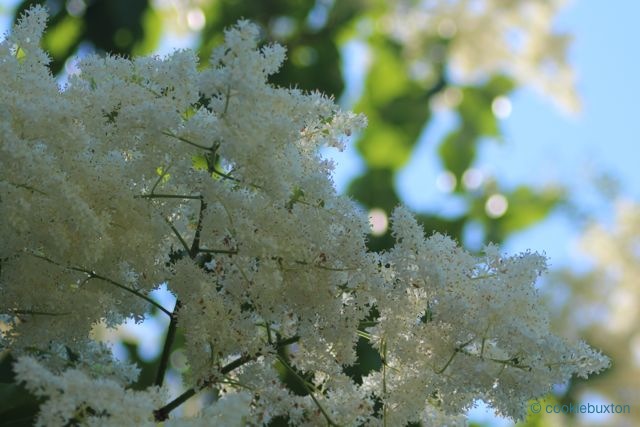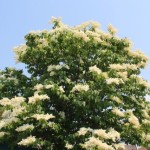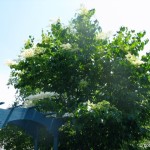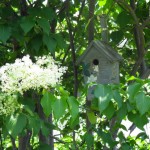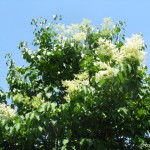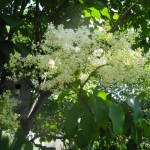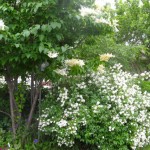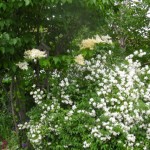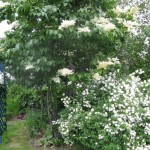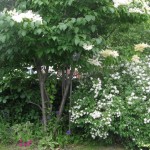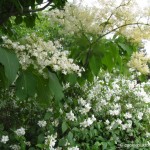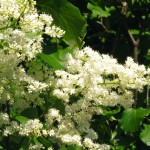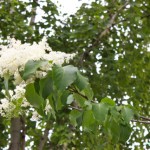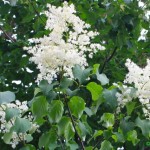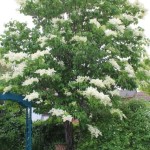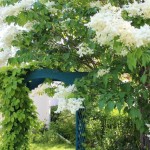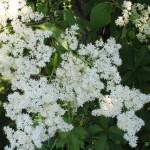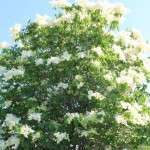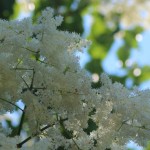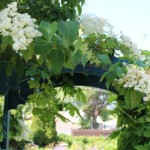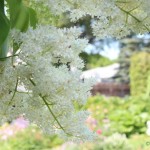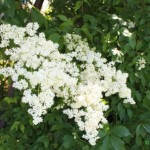Japanese Tree Lilac
With two Japanese Tree Lilacs (Syringa reticulata) in my small urban back yard, I am in heaven in early summer when these gorgeous bloomers produce their masses of white lilac blooms.
One of my trees is now 19 years old and is somewhere between 25 and 28 feet in height. It has likely reached its full mature size. I planted a second Japanese Tree Lilac in my yard four years ago, in discussion with my neighbour about what she would like for future privacy along our shared fence as well as offering a lovely view from her kitchen window. The two trees are now growing in similar locations, one along the east and one along the west fence lines of my yard, planted about five feet out from the fence.
On the west side, a fragrant mock orange is planted alongside my Japanese Tree Lilac. I am in love with this combination, and I cherish the month of June, a few weeks after the shrub lilacs blossom, as I wait for these two white-flowering specimens to reach and overlap in their flowering phases.
On the east side, I planted a Miss Kim Lilac beside my Japanese Tree Lilac. My Miss Kim, which is not yet mature but is heading towards its mature height of five feet tall, blooms earlier in spring. Miss Kim’s display is followed by the Tree Lilac by several weeks, creating a beautiful changing landscape on this side of my yard to balance out the height and lush green growth that takes place on the opposite side of the yard.
While attending a tree identification course a few weeks back, our instructor was discussing how to prune the seed pods from the Japanese Tree Lilac to support the flow of nutrients to the current season’s flowers. I must admit to you that in the years that I have enjoyed this tree in my yard, I have just left it alone.
Without any attention at all, apart from an occasional deep watering during a dry spell, the trees have done wonderfully well. The seed pods fall off when they are ready to do so, and I go about my daily business without paying much attention to this aspect. This approach wasn’t from any decision that I made. I was simply ignorant that people trimmed these away from the branches, and so I left the tree alone for nature to handle the matter. As a weekend gardener with a full time job, I frankly don’t relish adding jobs to my gardening to-do list if they are not necessary. Provided that the trees continue to thrive, any special attention for the two Japanese Tree Lilacs in my yard will remain somewhat minimal. This approach has worked so far, and so I will trust that these trees will be okay if I continue to neglect them in the future.
In terms of pests, I can’t recall any past seasons where there have been any issues to deal with, and this matches the literature on this excellent urban tree. It is low maintenance, hardy in North American zones 3 to 7, likes the sun, has attractive foliage, and produces gorgeous blooms, year after year. Fertilizer is known to help the tree produce beautiful blossoms. I’ve never added fertilizer, out of ignorance once again, and it still looks great.
For adding interest, dappled shade, gorgeous blossoms, and habitat for birds in your yard, the Japanese Tree Lilac is a truly excellent choice. There are a number of cultivars available. My warranties that I kept in my file only show Syringa reticulata without naming a cultivar, so I’m not able to speak to the type of cultivar that may be best for your situation. You may come across the cultivars “Ivory Silk” and “Chantilly Lace” in your local greenhouse.
Japanese Tree Lilac is a deciduous tree and member of the Oleaceae (Olive) Family.
Photos and Text: NK
Copyright: NK/cookiebuxton
Photo location: Home garden
Photo Gallery
Click on any photograph to enlarge, and click on that photo to advance through the series.
